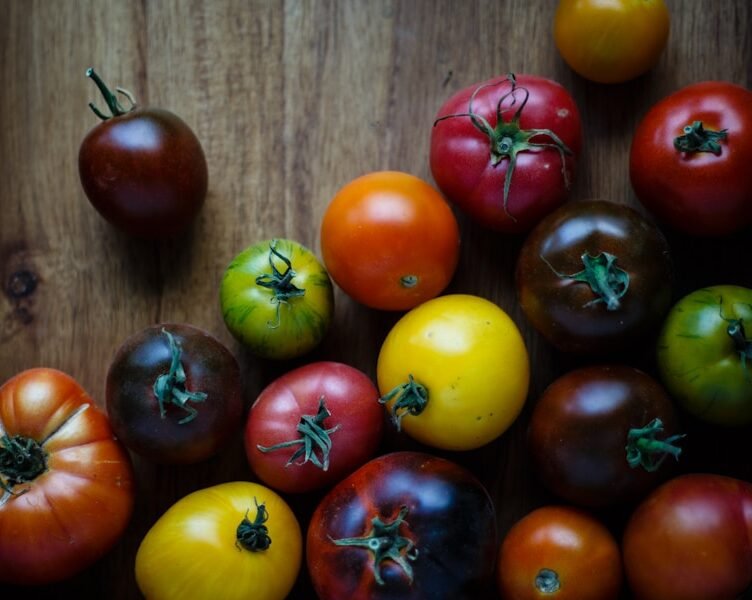A kitchen garden, also referred to as a potager garden, is a designated area for cultivating fruits, vegetables, herbs, and occasionally flowers, primarily for culinary use. Typically situated near the residence, it provides convenient access to fresh produce and is often designed to balance functionality with aesthetic appeal. For centuries, kitchen gardens have been an integral part of domestic life, offering families a sustainable means of obtaining fresh, healthy food.
By maintaining a kitchen garden, individuals can exert control over their food supply and reduce their dependence on commercially available produce. Beyond its role as a source of fresh, organic produce, a kitchen garden also serves as a tranquil retreat and a fulfilling hobby. It allows individuals to reconnect with nature and experience the satisfaction of growing their own food, making it a therapeutic and rewarding pursuit.
Additionally, kitchen gardens can function as a valuable educational resource for children, teaching them about the natural world and the origin of their food. Overall, a kitchen garden represents a practical and sustainable approach to incorporating fresh, healthy produce into daily meals.
Key Takeaways
- A kitchen garden is a small garden near or in your kitchen where you can grow herbs, vegetables, and fruits for personal use.
- Kitchen gardens provide easy access to fresh, organic produce, promote sustainable living, and can save money on grocery bills.
- To start a kitchen garden, choose a sunny spot, prepare the soil, and select plants that are suitable for your climate and space.
- Popular plants to grow in a kitchen garden include tomatoes, peppers, herbs, lettuce, and strawberries.
- To maintain a successful kitchen garden, water regularly, control pests, and harvest produce at the right time for optimal flavor and nutrition.
Introduction to Kitchen Gardens
The Resurgence of Kitchen Gardens
In recent years, there has been a resurgence of interest in kitchen gardens as people seek to live more sustainably and reduce their carbon footprint. With the rise of organic and farm-to-table movements, many individuals are turning to kitchen gardens as a way to ensure they have access to fresh, chemical-free produce.
Designing a Kitchen Garden
Kitchen gardens can be tailored to fit any space, from small urban balconies to sprawling suburban yards. They can be designed in a variety of styles, from formal and structured to more natural and wild. The key is to create a space that is both functional and visually appealing, with careful consideration given to the types of plants grown and their placement within the garden.
The Benefits of Starting a Kitchen Garden
Whether you are an experienced gardener or a novice, starting a kitchen garden can be a rewarding and fulfilling endeavor. With the COVID-19 pandemic sparking a renewed interest in gardening, many people are finding joy in growing their own food and being self-sufficient.
Benefits of Growing a Kitchen Garden
There are numerous benefits to growing a kitchen garden, both for individuals and the environment. One of the most obvious benefits is the access to fresh, organic produce right outside your door. This can lead to cost savings on groceries and reduce the carbon footprint associated with transporting food from farm to table.
Additionally, growing your own food allows you to have complete control over how it is grown, ensuring that no harmful chemicals or pesticides are used. Kitchen gardens also provide an opportunity for physical activity and time spent outdoors, which can have positive effects on mental health and well-being. The act of gardening itself can be therapeutic and stress-relieving, providing a sense of accomplishment and connection to nature.
Furthermore, kitchen gardens can serve as a habitat for beneficial insects and wildlife, contributing to overall biodiversity in the area. Overall, growing a kitchen garden can lead to healthier eating habits, reduced environmental impact, and an increased sense of connection to the natural world.
How to Start a Kitchen Garden
| Aspect | Definition |
|---|---|
| Definition | A kitchen garden is a small area near a house where vegetables, herbs, and fruits are grown for household use. |
| Benefits | Provides fresh and organic produce, reduces grocery expenses, promotes sustainable living, and enhances the beauty of the home. |
| Size | Can range from a few square feet to a larger area depending on available space and personal preferences. |
| Maintenance | Regular watering, weeding, and occasional fertilizing are necessary to maintain a healthy kitchen garden. |
Starting a kitchen garden can seem like a daunting task, but with some careful planning and preparation, it can be a relatively straightforward process. The first step is to assess the space available for the garden and determine what type of plants will thrive in that environment. Consider factors such as sunlight exposure, soil quality, and available water sources when choosing the location for your garden.
Once you have selected a suitable spot, it’s time to prepare the soil by removing any weeds or debris and adding organic matter such as compost or mulch. Next, decide what types of plants you want to grow in your kitchen garden. Consider your family’s dietary preferences and what grows well in your climate.
Start with a few easy-to-grow plants such as tomatoes, lettuce, and herbs to build confidence and experience before expanding your garden. It’s important to research the specific needs of each plant, including spacing requirements, watering needs, and potential pests or diseases. Finally, consider incorporating sustainable gardening practices such as companion planting and using natural pest control methods to create a healthy and thriving garden.
Types of Plants to Grow in a Kitchen Garden
There are countless options for plants to grow in a kitchen garden, ranging from fruits and vegetables to herbs and flowers. When selecting plants for your garden, consider what you enjoy eating and what will grow well in your climate and soil conditions. Some popular choices for kitchen gardens include tomatoes, peppers, cucumbers, lettuce, spinach, carrots, and radishes.
These vegetables are relatively easy to grow and provide a bountiful harvest throughout the growing season. In addition to vegetables, herbs are an essential component of any kitchen garden. Herbs such as basil, parsley, mint, and thyme can be used to add flavor and freshness to meals and are relatively low-maintenance plants.
Many herbs also have medicinal properties and can be used for teas or natural remedies. Finally, consider incorporating edible flowers such as nasturtiums or calendula into your kitchen garden for added beauty and culinary versatility. These flowers can be used in salads or as garnishes for dishes, adding color and flavor to your meals.
Tips for Maintaining a Successful Kitchen Garden
Watering: The Key to Healthy Plants
One of the most important aspects of garden maintenance is watering. It’s essential to water your plants consistently, ensuring that they receive enough moisture without becoming waterlogged. Consider using drip irrigation or soaker hoses to deliver water directly to the roots of the plants while minimizing water waste.
Monitoring for Pests and Diseases
In addition to watering, it’s important to monitor your garden for pests and diseases that can damage your plants. Regularly inspect your plants for signs of insect damage or fungal infections and take appropriate measures to address any issues that arise. This may include using natural pest control methods such as companion planting or introducing beneficial insects into the garden.
Weeding and Mulching for a Thriving Garden
Finally, regular weeding and mulching can help suppress weed growth and retain moisture in the soil, leading to healthier plants and higher yields.
Creative Ways to Utilize Kitchen Garden Produce
Once your kitchen garden begins producing an abundance of fresh fruits and vegetables, it’s time to get creative with how you use them in your meals. There are countless ways to incorporate homegrown produce into your cooking, from simple salads and stir-fries to more elaborate dishes such as homemade pasta sauces or pickled vegetables. Consider preserving excess produce through methods such as canning or freezing so that you can enjoy your harvest throughout the year.
In addition to using produce in traditional recipes, consider experimenting with new flavors and cooking techniques that highlight the freshness of your homegrown ingredients. For example, try making herb-infused oils or vinegars using herbs from your garden or create homemade pesto using fresh basil. You can also use edible flowers from your garden to decorate cakes or infuse them into syrups for cocktails or mocktails.
The possibilities are endless when it comes to utilizing the bounty from your kitchen garden in creative and delicious ways.
The Role of Kitchen Gardens in Sustainable Living
Kitchen gardens play an important role in sustainable living by promoting self-sufficiency, reducing food waste, and minimizing environmental impact. By growing your own food at home, you can reduce your reliance on store-bought produce that may have been transported long distances or treated with harmful chemicals. This can lead to lower carbon emissions associated with food production and transportation while also supporting local biodiversity.
Furthermore, kitchen gardens provide an opportunity to compost organic waste from food scraps and garden trimmings, creating nutrient-rich soil amendments that can be used to nourish the garden. This reduces the amount of waste sent to landfills while also improving soil health and fertility. Additionally, by growing a diverse range of plants in your kitchen garden, you can contribute to overall ecosystem health by providing habitat for beneficial insects and wildlife.
In conclusion, kitchen gardens are a valuable addition to any home, providing access to fresh, healthy produce while promoting sustainable living practices. Whether you have a small balcony or a large backyard, there are endless possibilities for creating a beautiful and productive kitchen garden that will enrich your life in numerous ways. By starting a kitchen garden and embracing the joys of growing your own food, you can take an active role in shaping a more sustainable future for yourself and the planet.
FAQs
What is a kitchen garden?
A kitchen garden is a small area of land near a house where vegetables, herbs, and fruits are grown for household use.
What can be grown in a kitchen garden?
A variety of vegetables, herbs, and fruits can be grown in a kitchen garden, including tomatoes, lettuce, carrots, peppers, basil, mint, strawberries, and more.
What are the benefits of having a kitchen garden?
Having a kitchen garden allows for easy access to fresh, organic produce, reduces grocery expenses, promotes sustainable living, and provides a source of physical activity and stress relief through gardening.
How much space is needed for a kitchen garden?
The space needed for a kitchen garden can vary depending on the number and types of plants being grown. It can range from a small raised bed or container garden on a balcony to a larger plot of land in a backyard.
What are some tips for starting a kitchen garden?
Some tips for starting a kitchen garden include choosing the right location with adequate sunlight, preparing the soil properly, selecting the right plants for the climate, and regularly watering and maintaining the garden.






